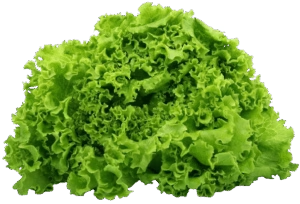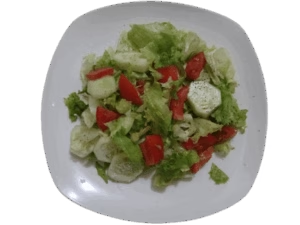TABLE OF CONTENTS
To ‘HIIT’ or not to ‘HIIT’ is sometimes the question asked by people who exercise or even fitness trainers. This is often due to the rigour of ‘HIIT’ routines. So, what is ‘HIIT?’ ‘HIIT’ stands for High-Intensity Interval Training. It is an exercise programme that involves short bursts of vigorous activities at maximum potential followed by rest periods.
But should this be a workout programme or routine you incorporate into your workouts? Well, research pertains that high-intensity interval training (HIIT) has benefits that may exceed those of exercises that involve a steady pace. Let’s discuss!
You can learn more about the benefits of exercising as well as how to create a fitness routine in the articles below:
The Discussion
High-intensity interval Training (HIIT) is described as the performance of exercise moves at a high intensity (burst of optimal speed) for usually Thirty (30) to Sixty (60) seconds to a few minutes with periods of recovery between (Shiraev and Barclay, 2012). While it is often still considered aerobic exercise, it is an amplified version of the standard steady-paced exercise.
High-Intensity Interval Training (HIIT) purportedly is associated with many benefits including improving cardiovascular and metabolic outcomes and improving blood pressure and inflammatory markers. As such, it is considered a useful routine for individuals who are healthy and those who may have health problems.
High-intensity interval Training (HIIT) is not considered a new concept. However, more and more fitness trainers and enthusiasts have been incorporating it into their fitness routines. Additionally, this kind of intervention was applied many years ago, in the 1970s in what was known as the ‘Wingate Protocol’ a common HIIT intervention used then (Bar-Or O, et al. 1977).
In this intervention, Thirty (30) seconds of cycling was performed at maximum effort with Four (4) minutes of recovery. This was repeated Four (4) to Six (6) times per session, Three (3) times per week (Gibala and McGee, 2008, Boutcher, 2011). This resulted in only a weekly workout duration of 2 to 3 minutes and with great results (cardiovascular and otherwise). Therefore, HIIT may be able to help those who may not have enough time to exercise to both start and maintain a regular exercise programme or schedule.
In this article, we will explore three (3) major health benefits of High-Intensity Interval Training (HIIT) and any risk factors associated with its performance. These include cardiovascular health, better breakdown of fat and carbohydrates for fuel and increased energy when exercising and post-exercise
You can read more about exercising and its benefits in these posts.
Exercise, it is more than just for weight loss!
Exercise and mental health – Is there a positive link?
Three (3) Major Health Benefits of High-Intensity Interval Training (HIIT):
- May help to improve cardiovascular health.
- A better breakdown of fat and carbohydrates for fuel.
- Increase in energy after working out.
HIIT and Cardiovascular Health
Studies have shown that High-Intensity Interval Training (HIIT) may not only provide similar benefits as standard or continuous endurance training but may offer even superior results (Helgerud et al. 2007; Wisloff et al. 2009).
In a study by Helgerud and colleagues, it was found that just running for Four (4) minutes at a time, repeating Four (4) times with Three (3) minutes of active rest (i.e. light jogging in place, etc.) and performing this activity for Three (3) days per week for Eight (8) weeks resulted in a greater improvement in stroke volume when compared to slow distance training which usually employs more time (Joyner and Coyle, 2008).
According to the Institutes of Health (NIH), stroke volume speaks to the volume of blood that the heart’s left ventricle pumps when it contracts (systolic contraction). Any improvement in stroke volume will help to maintain normal mean arterial pressure (Bruss and Raja, 2022; nih.gov).
Additionally, a study by Slordahl et al (2004) shows that HIIT training was able to increase left ventricle heart mass by Twelve (12%) percent as well as cardiac contractibility by Thirteen (13%) percent. However, it must be noted that these results were comparable to standard aerobic exercise. The duration of the HIIT sessions was not mentioned in this study.
The positive results on the body in performing HIIT are due to the fact that these types of exercises are usually able to achieve what is described as ‘maximal oxygen consumption’ (VO2max) sometimes to the tune of Ninety (90%) percent and over (Slordahl et al. 2004). Maximal oxygen consumption (VO2maz) is the ability of the body to consume, distribute and utilize oxygen to produce energy (Slordahl et al. 2004). As such, it is typically used as a predictor of exercise performance. As such, any improvement in the function of the cardiovascular system will improve or increase an individual’s VO2 max.
To this extent, those who suffer from cardiovascular diseases should aim to improve the function of the cardiovascular system as well as their VO2 max (Daussin et al. 2008).
Here are a few articles that can help with cardiovascular improvement as well as motivate you on your fitness journey:
Five (5) best exercises to do at home to strengthen and tone the entire body!
Exercise, it is more than just for weight loss!
HIIT and the Breakdown of Fat and Carbohydrates
HIIT was observed by researchers to be better able to break down both carbohydrates and fats and use them as fuel for exercising. This is due to a result of the increase in Mitochondria (Zuhl and Kravitz, 2006; Gibala, 2009). Mitochondria are considered the energy factor of our cells. As such, it uses oxygen to create what is known as Adenosine Triphosphate (ATP) (Zuhl and Kravitz, 2006; Gibala, 2009). ATP is the main or only fuel for the contraction of muscles.
Therefore, when an individual performs exercises like HIIT, the muscle’s storage of ATP will be used up or depleted. As such, the muscles must maintain normal contractile function through the continuous synthesizing of ATP (National Institutes of Health).
As such, with increased mitochondrial density, the body will have more energy for those working muscles (Zuhl and Kravitz, 2006) and thus the muscles will be able to work longer, helping you to experience better results and endurance. For example, running at high intensity for a longer period, of course, with proper breathing and recovery.
In a study by Burgomaster et al (2008), it was found that performing HIIT with Four (4) to Six (6), Thirty (30)-seconds of maximal cycling sprints (your optimal intensity), followed by Four (4) and a half (½) minute of recovery for Three (3) times per week led to a more effective breakdown of fat and carbohydrates for fuel. This was due largely to an increase in mitochondria oxidative enzymes (remember, those used to make ATP).
The results of Burgomaster and colleagues’ study were likened to those who performed between Forty (40) to Sixty (60) minutes of continuous endurance of steady cycling, Five (5) days per week and at a VO2 max of Sixty-five (65%) percent.
You can read the detailed article on running and its health benefits here. In this article, you will also learn how to include running into your fitness routine for weight loss.
Increase in Energy Post-Workout
An increase in energy after working out was observed as another benefit of performing HIIT. This according to research is referred to as – Excess Post Exercise Oxygen Consumption (E.P.O.C). This is because after performing HIIT both oxygen consumption and caloric expenditure remain high or elevated as the cells of the muscles that were worked restore themselves to pre-workout levels (Zuhl and Kravitz, 2006).
This results in both higher and longer post-workout caloric expenditure (Zuhl and Kravitz, 2006; LaForgia et al. 2006). Hence, you will often hear people say that they continue to burn fat after performing HIIT. This is the reason for that phenomenon.
How Many Times per week Must I Perform HIIT
Research suggests that at least Three (3) times per week can produce optimal results (Daussin et al. 2008). Additionally, the duration of HIIT routines may vary depending on one’s fitness goals. However, Fifteen (15) to Thirty (30) minutes are often seen as ideal for great, long-term benefits and results.
Remember, to take time to recover between sessions. This is particularly important as it helps the body and heart rate to recover as well as prevent injuries.
Risk in Performing HIIT
Risks exist with all physical activities, and exercising, in this case, HIIT. Since HIIT increases heart rate intensity than other aerobic activities, it is recommended that warm-up, recovery time and cool-down be of paramount importance.
Additionally, less is more. Do not believe that increasing quantity (time and routine), will allow you to experience improved benefits. This is not the case with HIIT, as the body can become fatigued and experience more injury.
Illustrative Summary
Here is an illustrative summary of the Three (3) Major Benefits of Performing High-Intensity Interval Training (HIIT).
Let’s Sum Up!
An important goal of any exercise programme is to improve one’s physique and overall health. This was largely the argument for regular cardiovascular or aerobic exercise. However, research has shown that High-Intensity Interval Training (HIIT) can lead to even better results in a shorter period.
As such, incorporating HIIT into your regular exercise plan should be a worthwhile consideration, especially if you want to lose weight and improve your physique and overall health.
So, now that we have explored three (3) of the major benefits of performing HIIT, is this a programme you would incorporate into your workout sessions, if not yet? If you already perform HIIT regularly, what’s your routine like? Share it nuh!
You can read more about exercising and its benefits as well as other exercises that can help you to lose weight, tone and strengthen the abs as well as start your fitness programme. Click the articles below:
- Bar-Or O, Dotan R, Inbar O. A 30 seconds all out ergometric test: its reliability and validity for anaerobic capacity. Israel Journal of Medical Science 1977;113:226–30.
- Boutcher SH. High-intensity intermittent exercise and fat loss. J Obes 2011;2011:868305.
- Bruss ZS, Raja A. Physiology, Stroke Volume. [Updated 2022 Sep 12]. In: StatPearls [Internet]. Treasure Island (FL): StatPearls Publishing; 2024 Jan-. Available from: https://www.ncbi.nlm.nih.gov/books/NBK547686/
- Burgomaster, K.A., Howarth, K.R., Phillips, S.M., Rakobowchuk, M., Macdonald, M.J., McGee, S.L., and Gibala, M.J. (2008). Similar metabolic adaptations during exercise after low volume sprint interval and traditional endurance training in humans. Journal of Physiology, 586(1), 151-160.
- Daussin, F.N., Zoll, J., Dufour, S.P., Ponsot, E., Lonsdorfer-Wolf, E. et al. (2008). Effect of interval versus continuous training on cardiorespiratory and mitochondrial functions; relationship to aerobic performance improvements in sedentary subjects, American Journal of Physiology: Regulatory, Integrative and Comparative Physiology, 295, (R264-R272.
- LaForgia, J., Withers, R.T., and Gore, C.J. (2006). Effects of exercise intensity and duration on the excess post-exercise oxygen consumption. Journal of Sports Science, 24(12), 1247-1264.
- Gibala MJ, McGee SL. Metabolic adaptations to short-term high-intensity interval training: a little pain for a lot of gain? Exerc Sport Sci Rev 2008;36:58–63.
- Gibala, M. (2009). Molecular responses to high-intensity interval exercise. Applied Physiology, Nutrition, and Metabolism, 34(3), 428-432.
- Helgerud, J., Høydal, K., Wang, E., Karlsen, T., Berg, P., et al. (2007). Aerobic high-intensity intervals improve VO2max more than moderate training. Medicine and Science in Sports and Exercise, 39(4), 665-671.
- Joyner, M.J. and Coyle, E.F. (2008). Endurance exercise performance: the physiology of champions. Journal of Applied Physiology, 586 (1), 35-44.
- Shiraev T, Barclay G. Evidence based exercise – clinical benefits of high intensity interval training. Aust Fam Physician. 2012 Dec;41(12):960-2. PMID: 23210120.
- Slørdahl, S.A., Madslien, V.O., Støylen, A., Kjos, A., Helgerud, J., and Wisløff, U. (2004). Atrioventricular plane displacement in untrained and trained females. Medicine and Science in Sports and Exercise, 36(11), 1871-1875.
- Wisløff, U., Ellingsen, Ø., and Kemi, O. J. (2009). High-intensity interval training to maximize cardiac benefits of exercise training? Exercise Sport Science Review, 37(3), 139-146.
- Zuhl, M. and Kravitz, L (2006). Hiit vs Continous Endurance Training: Battle of the Aerobics Titans.





